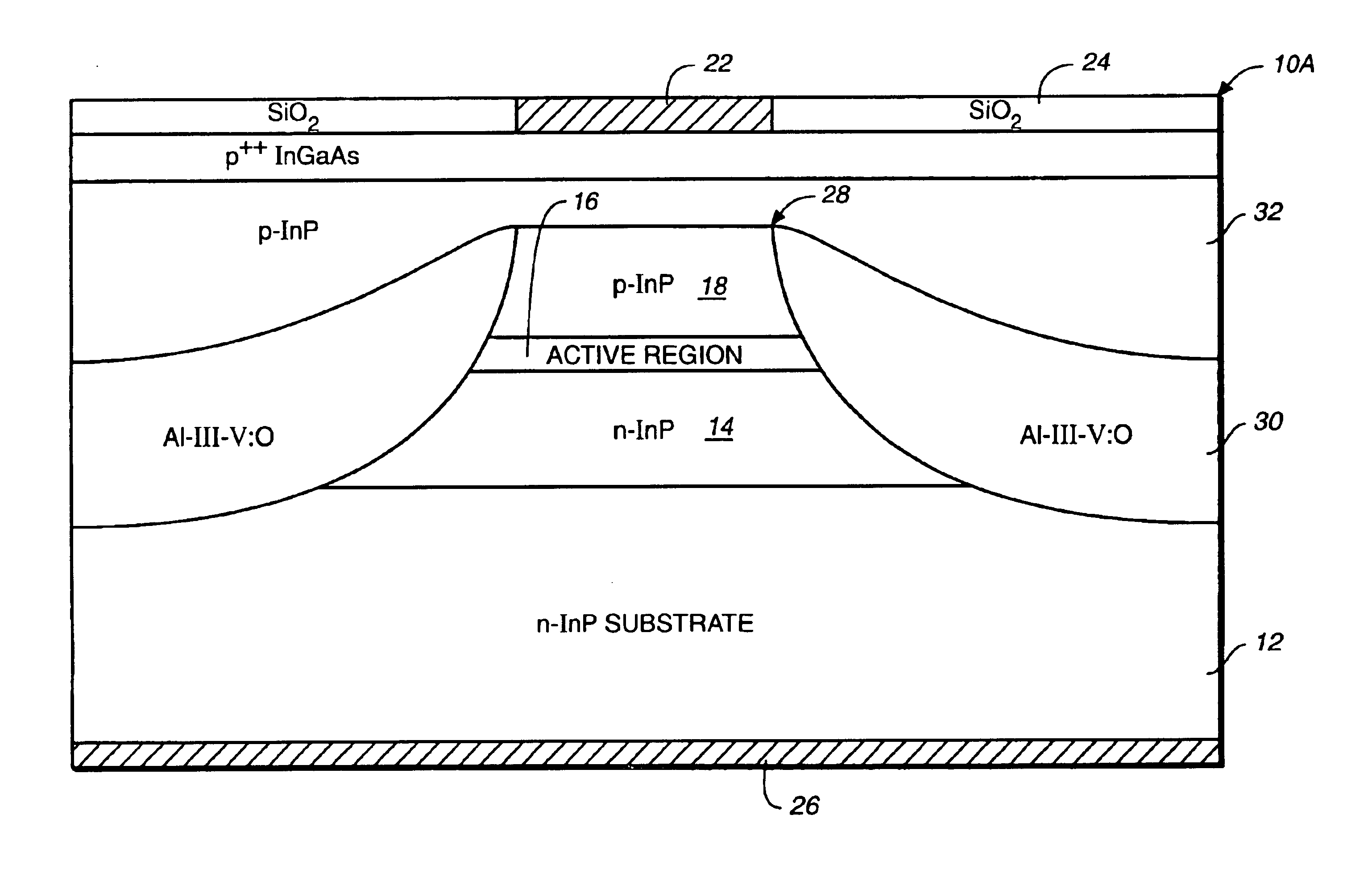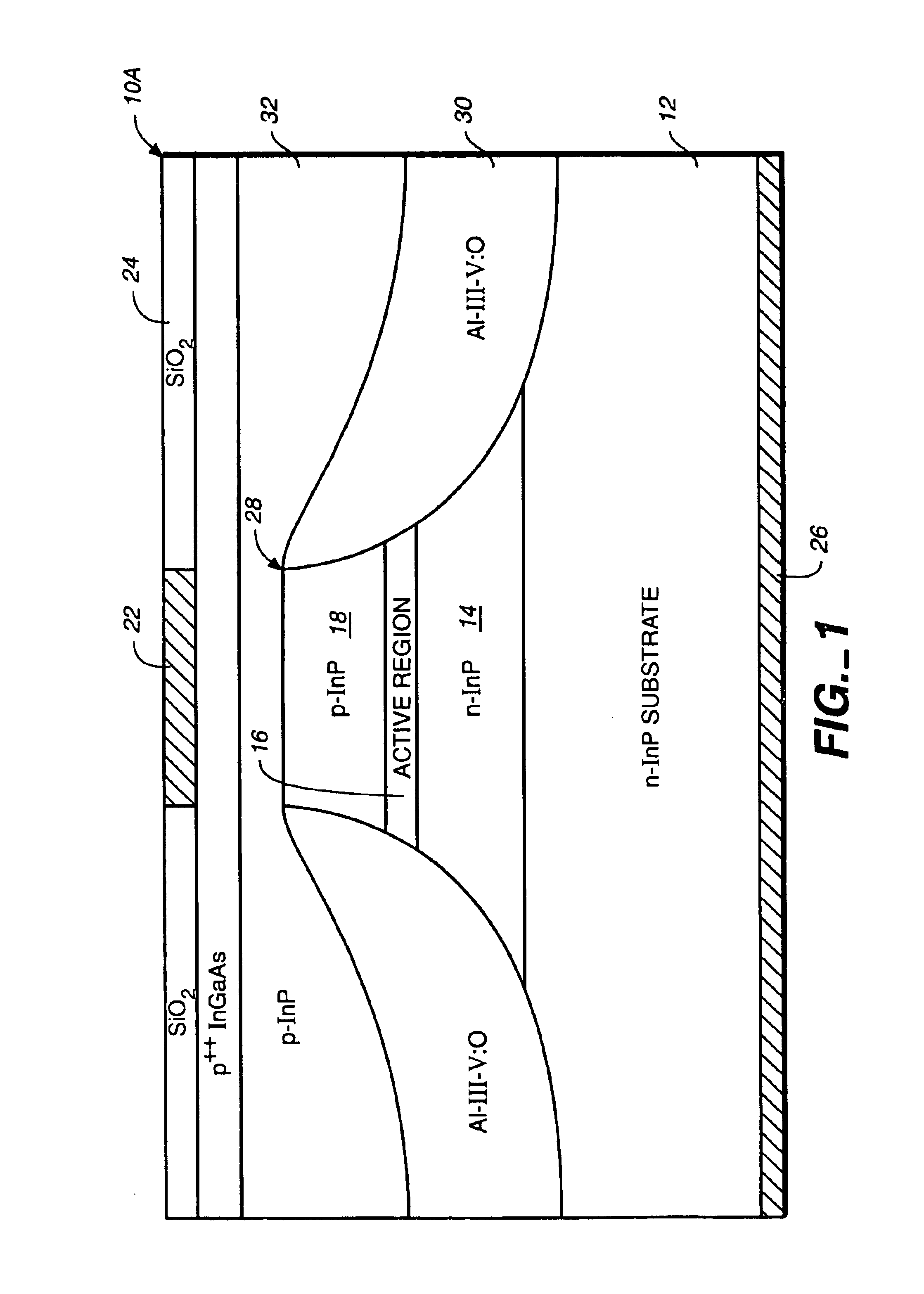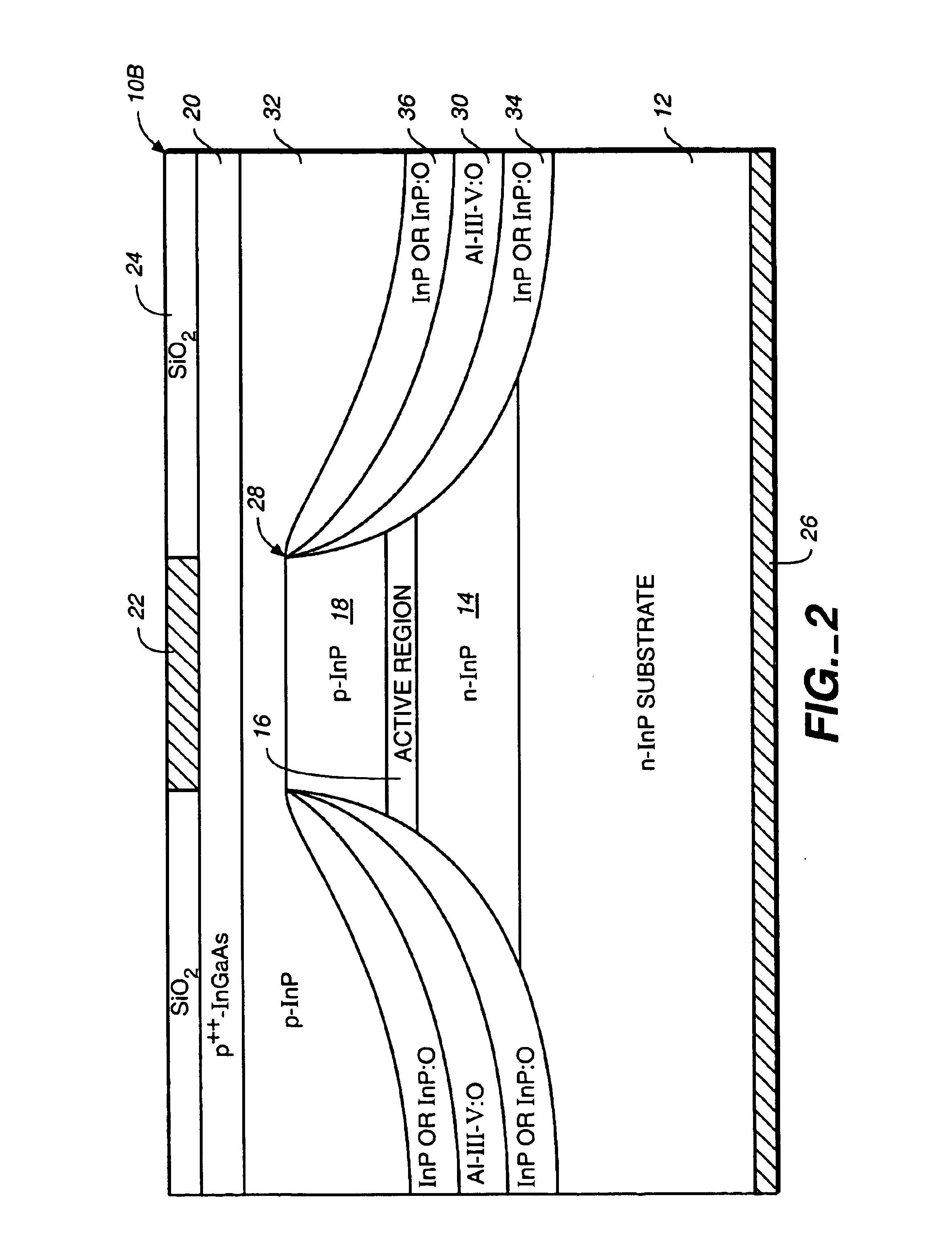Oxygen-doped Al-containing current blocking layers in active semiconductor devices
a technology of active semiconductor devices and current blocking layers, which is applied in the direction of solid-state devices, lasers, semiconductor lasers, etc., can solve the problems of reverse biased p-n junctions in these devices that may not be easily adaptable to bit rate, limited the high speed characteristics of such devices, and may possess leakage paths leading to high thresholds. , to achieve the effect of high resistivity
- Summary
- Abstract
- Description
- Claims
- Application Information
AI Technical Summary
Benefits of technology
Problems solved by technology
Method used
Image
Examples
first embodiment
[0040]Reference is now made to FIG. 1 illustrating this invention in a generally generic form. Active semiconductor device 10A may be, for example, any such semiconductor device that is rendered operative through the establishment of a current channel through the device, such as, a semiconductor laser diode, semiconductor optical amplifier (SOA), LED or EA modulator, just to name a few such devices. Device 10A comprises a substrate 12, for example, n-InP, upon which is grown lattice-matched or pseudomorphic strained active layer or layers comprising active region 16. To provide for carrier recombination under applied bias conditions, Group III-V epitaxially grown layers may be provided with an n-type dopant, such as Si or S, or with a p-type dopant such as Zn or Mg, as is well known in the art. Substrate 12 could also be GaAs but for wavelengths useful in present optical telecommunication systems, the preferable material system for these devices are InP material systems, such as, bu...
second embodiment
[0047]Reference is now made to FIG. 2 which discloses this invention. In this embodiment as well as in all subsequent embodiments, the previous description relative to elements and components in FIG. 1 equally apply to all of the same elements and components having the same numerical identification in figures of the subsequent embodiments. FIG. 2 is the same as FIG. 1 except there is, in addition, the deposited layers 34 and 36 between which is formed current blocking Al-III-V layer 30. These layers 34 and 46 are optionally added in the case where, for example, the close proximity of the Al-III-V:O layer to the mesa 28 or active region 16 may induce deleterious device effects (e.g., high interface recombination). In these cases, it may be desirable to set-back the Al-III-V:O layer with a layer of InP or InP:O. This layer should be in the range of about 100 Å to 2 μm thick, preferably about 500 Å to 5,000 Å thick. In the case of layer 34, this lower set-back layer may comprise InP, I...
third embodiment
[0048]Reference is made to FIG. 3 illustrating this invention comprising the same layers as shown in FIG. 2 except that here, the material of choice for current blocking layer 30 is InAlAs:O sandwiched between layers 34A and 36A of n-InP and p- or n-InP, respectively. Alternatively, layer 36A can be doped as InP:O. While InAlAs:O is illustrated in this embodiment for blocking layer 30, it should be understood that blocking layer 30 may also be InAlGaAs:O or alternating layers or monolayers of AlAs:O / InAs, the latter of which will be described in more detail later, such as relative to the embodiment shown in FIG. 6.
PUM
 Login to View More
Login to View More Abstract
Description
Claims
Application Information
 Login to View More
Login to View More - R&D
- Intellectual Property
- Life Sciences
- Materials
- Tech Scout
- Unparalleled Data Quality
- Higher Quality Content
- 60% Fewer Hallucinations
Browse by: Latest US Patents, China's latest patents, Technical Efficacy Thesaurus, Application Domain, Technology Topic, Popular Technical Reports.
© 2025 PatSnap. All rights reserved.Legal|Privacy policy|Modern Slavery Act Transparency Statement|Sitemap|About US| Contact US: help@patsnap.com



